Barbu d’Anvers (Antwerp Bearded Bantam): Breed Profile
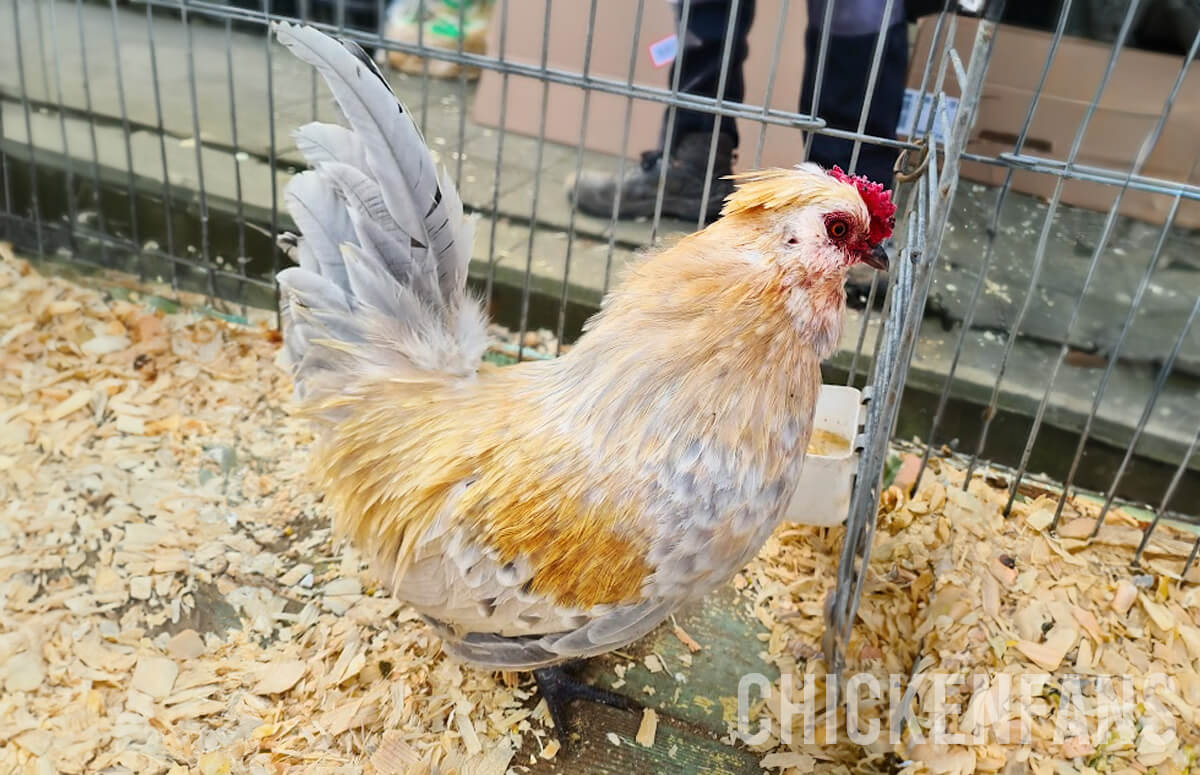
Barbu d’Anvers chickens are a small breed that stands proudly upright. With their round breasts jutting forward and an elegant beard, many backyard keepers fall in love with this bird at first sight.
Despite their tiny size, these birds have a charming personality and rich history. On top of that, they’re friendly and easy to raise.
- Barbu d’Anvers hens lay around 3 eggs weekly
- True Bantam breed
- Easy to handle, good with childeren
- Ornamental bird, kept as pet or show chicken
- Tend to go broody
| Eggs | 2 to 3 per week |
| Egg Color | Cream |
| Egg Size | Small |
| Weight | 1.3 – 2 lbs |
| Hardiness | Cold & Heat |
| Temperament | Docile and friendly |
| Beginner-friendly | Yes |
| Color | Varies |
Characteristics
The Barbu d’Anvers is a true bantam breed with no full-sized counterparts. But even for a bantam, Barbu d’Anvers chickens are pretty tiny. They typically weigh around 1.3 to 2 pounds (600 to 700 grams).
This breed has a prominent beard of feathers, giving it a noble appearance that pairs nicely with its upright chest and arching tail. The birds appear low-set, with their wings carried very low.
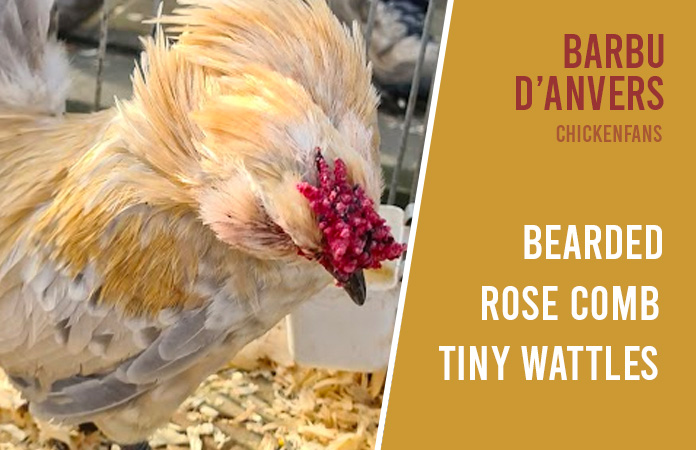
Additionally, the Antwerp birds have a petite rose comb, small or missing wattles, and clean legs.
| Body Part | Ideal Characteristic for Barbu d’Anvers |
|---|---|
| Head | Large, broad, and short; face covered by the beard |
| Comb | Small rose comb, red in color |
| Beak | Short and slightly curved |
| Eyes | Large, lively, and as dark as possible |
| Neck | Short and strong, with a very full and curved neck mane |
| Body | Short, broad, and tapering slightly towards the back |
| Tail | High, almost vertical in males; lower in females |
| Legs and Feet | Short and finely scaled, with four toes |
Personality
Barbu d’Anvers chickens have a friendly disposition, especially the hens. Due to their small size, they make great pets for children to handle.
Additionally, Barbu d’Anvers chickens are show birds. They love to strut off and show off their regal appearance, making them popular birds at poultry shows worldwide.
Roosters, in particular, will have their heads thrown back, their wings carried forward, and their round breasts sticking out to give off that noble atmosphere. Along with their beards, these chickens will always attract the attention of others in the backyard.
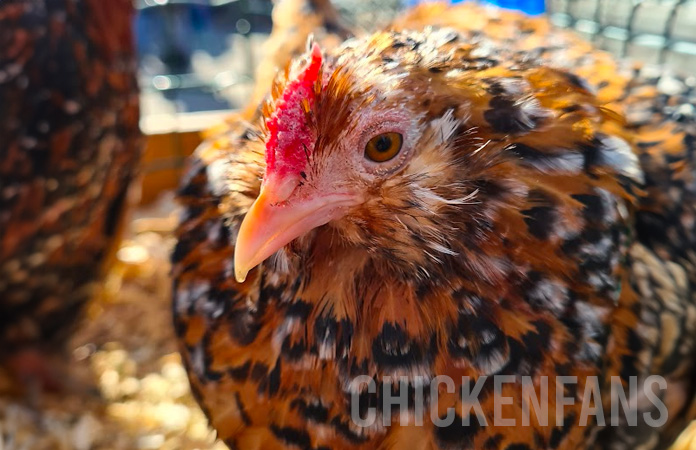
Being a small breed, the Barbu d’Anvers don’t require a lot of space in your backyard. As such, they can do well in small spaces and can handle confinement. Many experienced chicken keepers advise that you allow them to free-range to help extend their life expectancy.
Even though they don’t require much space, providing them with enough space to move around comfortably and not overcrowd them is essential. Check out our Coop Size Calculator to determine how much inside and outside space your Antwerp bantam flock needs.
Climate
Barbu d’Anvers can tolerate both heat and cold weather, so you can raise them in any climate. However, as all chickens do, they still require adequate shelter and water to combat extreme weather conditions.
If you want to learn how to help your chickens combat the heat on an intense, hot day, check out our article on how to cool chickens down (and what NOT to do).
Next to heatwaves or extreme cold, most bantam chickens aren’t fond of wet and muddy environments. Ensure their run area remains dry and is placed in the dryest area of the garden.
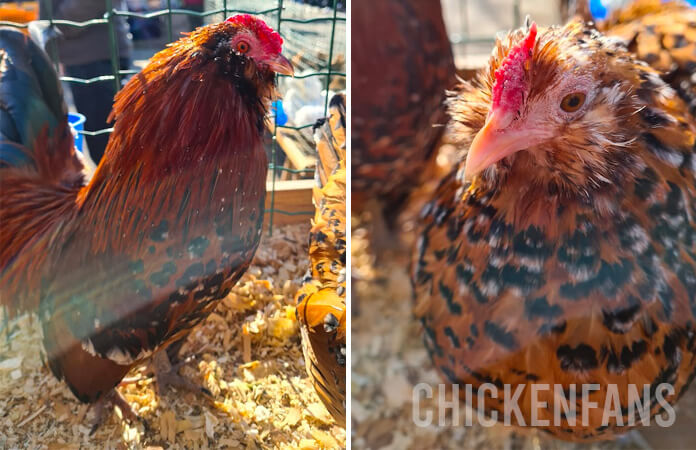
Egg Production
Barbu d’Anvers hens are not exceptionally great egg layers like most bantam breeds. However, they can still produce a decent amount of eggs. Generally, you can expect a Barb d’Anvers hen to lay around two to three eggs weekly. The eggs are creamy white in color and small in size.
Additionally, Barbu d’Anvers hens tend to go broody. As such, they make great mothers if you aim to hatch eggs. But on the other hand, you need to keep in mind that egg production will temporarily stop during broodiness.
Breed Origin and History
The Barbu d’Anvers breed comes from Belgium, Europe, specifically the province of Antwerp (Anvers in French) in northern Belgium. Barbu means beard in French, and Anvers is the French name for the province of Antwerp.
Some people speak of the Antwerp Belgian bantam or Antwerp bearded bantam. In the United States, they often refer to the bantam chickens as the Belgian Bearded d’Anvers.
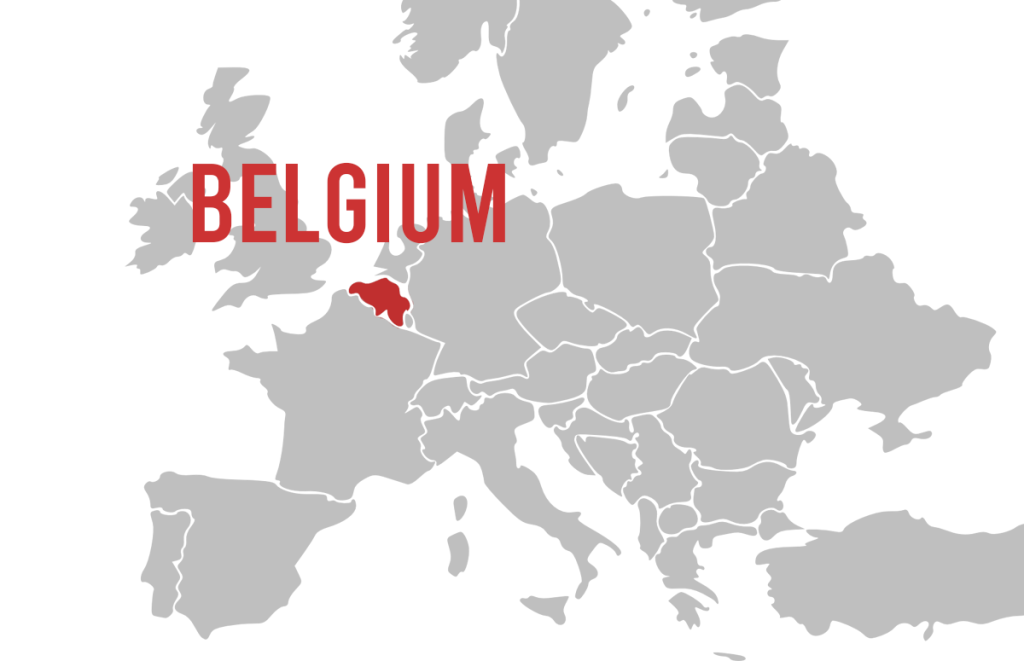
As mentioned earlier, the Barbu d’Anvers breed is a true bantam breed and one of the world’s oldest bantam breeds. Even though it’s difficult to pinpoint when this breed originated, historians believe it existed since the 17th century or earlier, as seen in paintings.
The first mention of the Barbu d’Anvers dates back to 1858, while the first time someone described the variety was in 1882 by Victor la Perre de Roo.
The Antwerp Bantams started gaining popularity around the 1800s. In 1910, the Club Avicole du Barbu Nain – a breeders’ club for the Barbu d’Anvers – reportedly had nearly 500 members.
By the early 20th century, interest in these Belgian birds had grown exponentially. Soon, the exportation of the Barbu d’Anvers to other places, such as the United States, started to commence. In 1949, the American Poultry Association recognized this breed in the Standard of Perfection.
Additionally, this is the only Belgian bantam breed not to face the threat of extinction and is not on any endangered species list. In 2005, a census found at least 1,500 birds in Belgium alone.
With its friendly disposition and proud appearance, this breed is still a popular true bantam breed to this day. As such, it remains a crowd favorite among breeders.
Color Varieties & Standards
Barbu d’Anvers chickens come in a variety of colors. Belgium, where the breed originates from, recognizes at least 29 different color varieties of the breed’s plumage, while in Germany, the number goes up to 35 different colors.
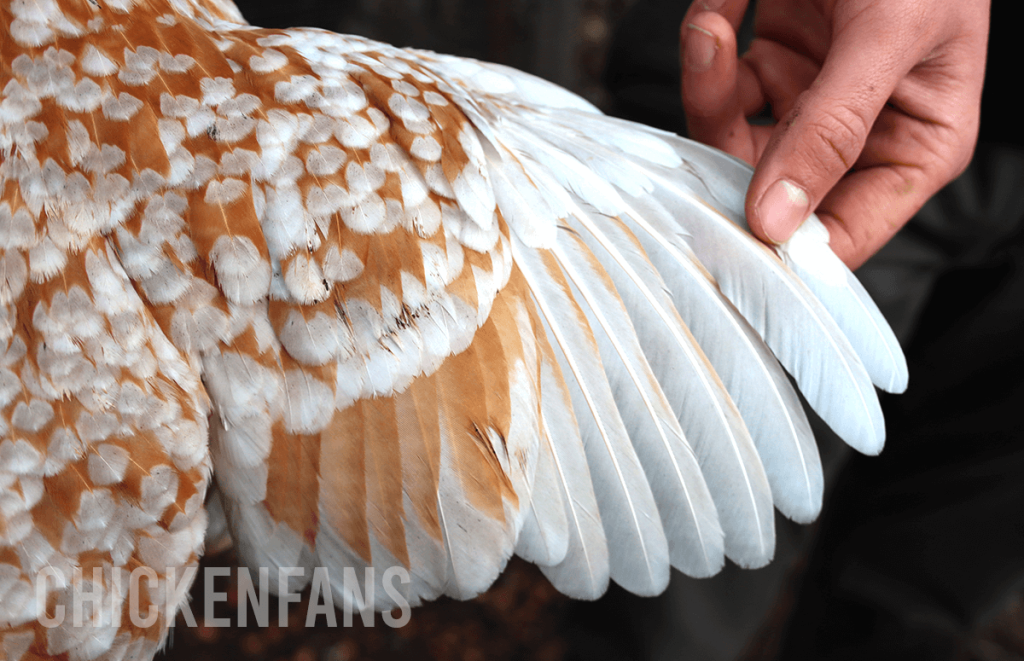
Due to their beard of feathers and proud appearance, hobbyists and enthusiasts keep them as either ornamental birds or pets. However, most people who breed these chickens show them off to others in exhibitions and friendly competitions.
The American Poultry Association (APA) recognizes nine different colors of Barbu d’Anvers: Black, Blue, Cuckoo, Mille Fleur, Mottle, Porcelain, Quail, Self Blue, and White. We’ll cover all of them later in the article.
Black Barbu d’Anvers
Black Barbu d’Anvers chickens have green-glossy black upper feathers and dull black underfeathers. Their eyes are dark brown, their beaks are dark horn-colored or black, and their legs and toes range from slate blue to black.
Blue
The Blue Antwerp bantams have a medium slate-blue body, with each feather edged in dark blue-black. The neck and saddle feathers in roosters and the neck collar in hens appear slightly darker.
Their eyes are dark brown, beaks are dark horn-colored or black, and legs and toes are slate blue.
Cuckoo
Cuckoo bantams have a gray-black base color with light gray horizontal bands that form an inverted V in the neck and saddle feathers. The hens usually appear to be slightly darker as they have narrower bands.
The cuckoos have orange-red eyes, white to bluish beaks, and legs ranging from flesh-colored white to light gray; some black scales are permissible on the hens’ legs.
Mottle
Mottled Barbu d’Anvers chickens have a predominantly black plumage with a green sheen punctuated by sharply defined white patterns. The tail and flight feathers have small white tips.
The birds have orange-red to red-brown eyes and dark horn-colored beaks. Their legs and toes are white with dark spots, though slate blue is also acceptable. The white in the pattern increases with age, peaking at two years old.
Mille Fleur & Porcelain
The Porcelain color is essentially the Mille Fleur color modified by introducing the Lavender (Lav) gene.
Just like in other bantams – such as the Barbu d’Uccle – the amount of white in the patterns increases when the chicken gets older. Animals that are two years old generally have the best color distribution. The pattern may be slightly coarser than described.
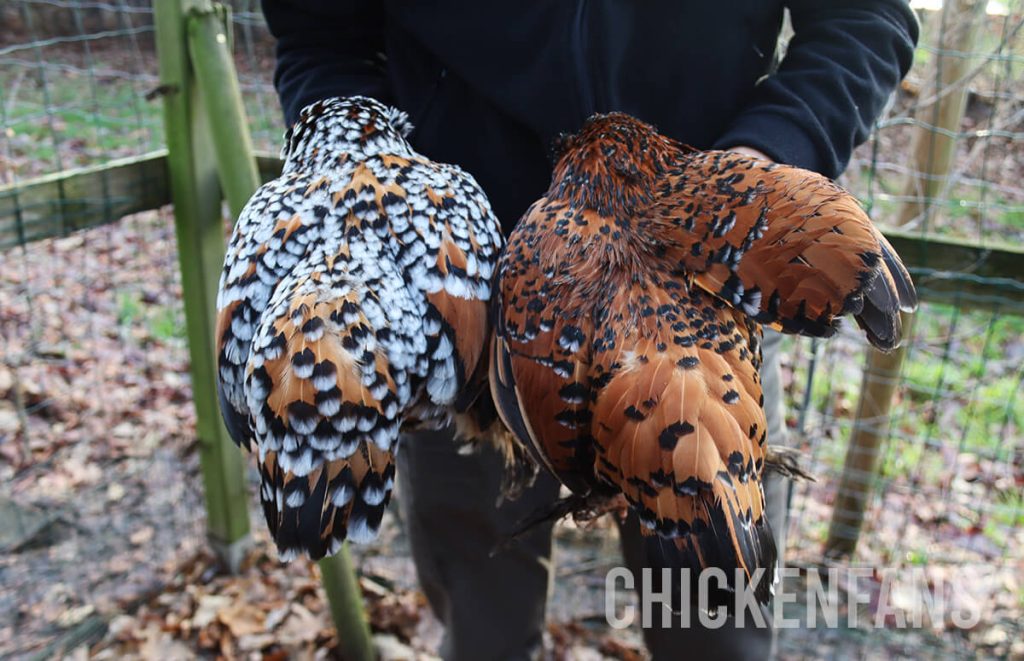
Roosters have a dark ochre-red head and warm ochre-red neck feathers, each tipped with a small diamond-shaped white spot. Their tail feathers are black with white tips, and their breast is ochre-red with V-shaped white tips separated by a crescent-shaped green-glossy black band.
The hens have similar ochre-red feathering but with green-glossy black and white tips. Both genders have under feathers that transition from blue-gray to grayish-red-yellow.
Quail
Roosters of quail bantams have dark brown eyes, a shiny black head with gold edging, and a brilliant gold-yellow breast. The hens have similar eye color, a black head with narrow gold edging, and a gold-yellow front.
Both genders have slate-blue legs and toes, and their ground feather color is gray. The roosters display vibrant colors with green-glossy black and gold-brown accents, while the hens have a more subdued palette with dark brown and gold-yellow tones.
Self Blue (Lavender)
Self-blue bantams have a uniform, pearl-gray look. The shade is distinct both visually and genetically from regular blue. It has a softer, lighter, and more silvery hue without tendencies to form darker blue or black sections.
Very narrow crosswise pigment accumulations, darker than the rest of the feather, are characteristic but in shows, they are not considered faults if limited. Their eyes are dark brown, beaks are dark horn-colored or black, and legs and toes are slate blue. The underfeather color is silvery pearl gray.
White
The white variation of the Antwerp birds has pure white plumage and shafts, all with enough gloss to avoid looking dull.
Their eyes are generally dark brown but can be red to red-brown if they have white legs. Beaks are white to bluish, while the legs and toes are typically slate blue (but can also be white).
Barbu d’Anvers vs Barbu d’Uccle
The Barbu d’Anvers is very similar to another popular Belgian breed: the Barbu d’Uccle. However, there are some differences.
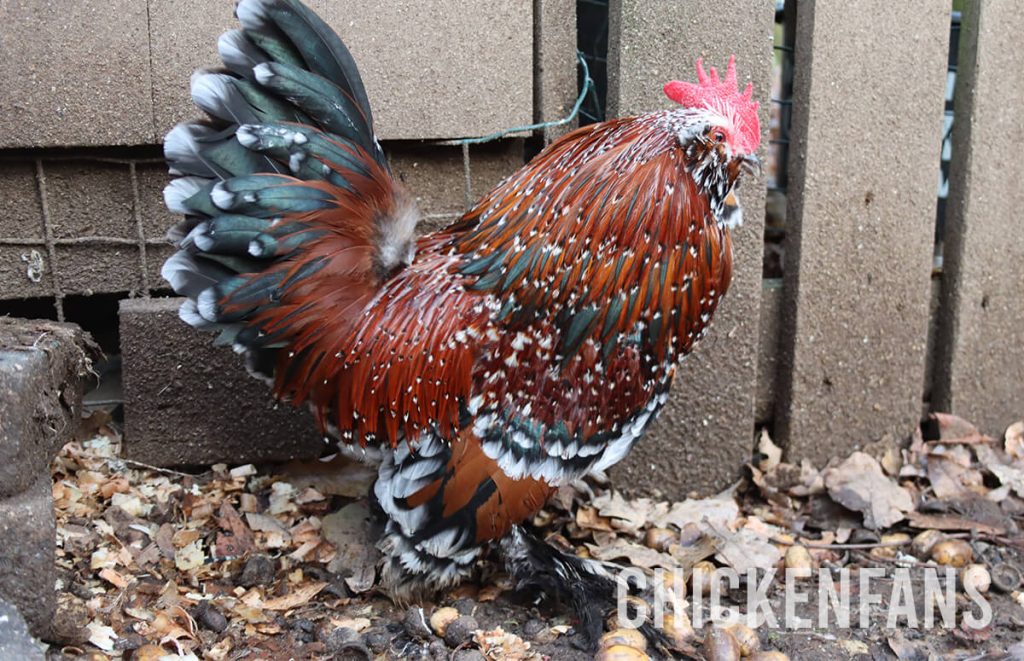
The Barbu d’Anvers has a rose comb, whereas the Barbu d’Uccle has a single comb. The Antwerp birds are a little bit older and smaller. In contrast, the Barbu d’Uccle was developed in the early 20th century and has feathered legs and slightly higher weight ranges of 700-800 grams for males.
The following table gives an overview of the similarities and differences between both breeds.
| Feature/Characteristic | Barbu d’Anvers | Barbu d’Uccle (Ukkelse baardkriel) |
|---|---|---|
| Place of Origin | Belgium, Antwerp | Belgium, Uccle |
| Date of Origin | Before 1850 | Early 20th century |
| General Appearance | Small, compact, upright | Short, broad, compact |
| Beard | Full beard | Richly developed beard |
| Comb | Rose comb | Single comb |
| Weight (Males) | 600-700 grams | 700-800 grams |
| Weight (Females) | 600 grams | 550-650 grams |
| Egg Production | 2-3 eggs per week | 2-3 eggs per week |
| Egg Color | Cream | Cream, Tinted |
| Temperament | Docile, friendly | Calm, friendly |
| Feathered Legs | No | Yes |
| Conservation Status | Not threatened | Critical |
| Climate Tolerance | Cold & Heat | Cold & Heat |
| Number of Color Varieties | 29 in Belgium | 28 in Belgium |
| Ring Size (Males) | 11 mm | 14 mm |
| Ring Size (Females) | 9 mm | 13 mm |
| Broodiness | Tend to go broody | Tend to go broody |
| Use | Ornamental, pet, show | Ornamental, pet, show |
Summary
The Barbu d’Anvers is a true bantam breed that also qualifies as one of the oldest bantam breeds in the world. With its distinctive beard, petite rose comb, and stuck-out chest, this breed’s regal and noble appearance makes it a mainstay in poultry shows. Not only that, but their friendly and calm disposition also makes them great companions to have in your backyard.
To learn more about chicken breeds, check out our ‘Chicken Breeds Page‘ to see every specific breed we address. Or go to our listicle breed summary on ‘The Classroom‘, or, if you’re unsure where to start, take a look at our ‘Chicken Breeds: Ultimate Beginners Guide‘.






















